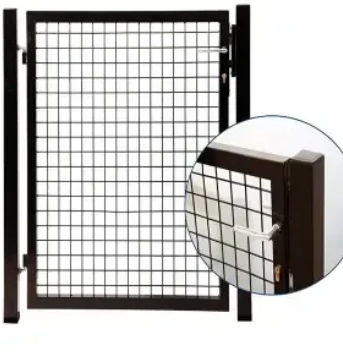
Nov . 09, 2024 12:22 Back to list
Guide to Welded Wire Fabric Gauge Measurements and Specifications
Understanding Welded Wire Fabric Gauge Chart
Welded wire fabric, commonly known as welded wire mesh, is a prefabricated matrix of wires that are welded together at their intersections. It plays a crucial role in construction, agriculture, and various industrial applications, providing structural support, reinforcement, and fencing solutions. An essential tool for engineers, architects, and contractors working with welded wire fabric is the gauge chart, which outlines the various wire diameters, spacing, and material specifications.
What is a Gauge Chart?
A gauge chart is a reference guide that displays the thickness of wire in terms of gauge numbers. The gauge number system is an inverse relationship; as the gauge number increases, the wire diameter decreases. For instance, a wire corresponding to a gauge number of 8 is thicker than one corresponding to a gauge number of 16. This means that when selecting welded wire fabric for a specific application, understanding the gauge dimensions is paramount.
Importance of Wire Gauge
The wire gauge affects the strength, flexibility, and durability of welded wire fabric. Thicker wires (lower gauge numbers) are generally stronger and more suitable for heavy-duty applications, such as in concrete reinforcement in slabs, walls, and foundations. On the other hand, thinner wires (higher gauge numbers) may be adequate for lighter applications, such as fencing or horticultural use. It's essential to choose the appropriate gauge based on the anticipated load and environmental conditions.
Common Wire Gauges and Their Applications
Here are some common wire gauges used in welded wire fabric, along with their typical applications
- Gauge 4 (0.225 inches) Often used in industrial applications, it provides substantial strength for high-load conditions. Suitable for structural and architectural reinforcement.
welded wire fabric gauge chart

- Gauge 6 (0.192 inches) This gauge is a balance between strength and flexibility, making it ideal for residential concrete applications and outdoor settings, such as patio slabs or sidewalks.
- Gauge 10 (0.135 inches) Commonly employed for animal enclosures, garden fencing, and light structural work. Its lightweight profile ensures easy handling and installation.
- Gauge 14 (0.080 inches) Typically used for agricultural fencing and light-duty applications. While it offers less strength, it is versatile and straightforward to use.
Understanding the applications of each gauge helps in making informed decisions based on specific project needs.
Wire Spacing
In addition to gauge, spacing between the wires is another critical element of the welded wire fabric gauge chart. Common spacing options are 2 inches, 4 inches, and 6 inches, and they can significantly affect the load distribution and overall performance of the mesh. Denser spacing provides enhanced support, making it suitable for heavier loads, while wider spacing can be sufficient for lighter needs.
Conclusion
The welded wire fabric gauge chart is a vital resource that simplifies the selection process for construction and fencing projects. By understanding wire gauges and their applications, professionals can ensure that they choose the right type of welded wire fabric for their specific projects. The right selection not only enhances performance but also optimizes cost-efficiency and safety. Therefore, whenever embarking on a new project involving welded wire fabric, referencing the gauge chart should be a standard practice to achieve the desired strength and durability.
-
Why a Chain Link Fence is the Right Choice
NewsJul.09,2025
-
Upgrade Your Fencing with High-Quality Coated Chicken Wire
NewsJul.09,2025
-
The Power of Fence Post Spikes
NewsJul.09,2025
-
The Best Pet Enclosures for Every Need
NewsJul.09,2025
-
Secure Your Property with Premium Barbed Wire Solutions
NewsJul.09,2025
-
Enhance Your Construction Projects with Quality Gabion Boxes
NewsJul.09,2025
Products categories











